Armach Robotics Set to Take the Pole Position on Ship Hull Maintenance, Intelligence
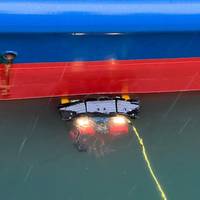
Melding advanced software, intelligence, robotics and navigation, Armach Robotics – a spinoff of Greensea Systems – leads a step change in ship hull cleaning and maintenance with its Robotics as a Service model. Ben Kinnaman, the CEO of Greensea Systems, explains.Ben, to start us off, please give us a background on Armach Robotics? Where did the idea come from and where are we today?Greensea Systems is a software company, well-known for our software platform on ocean robotics. We're also well-known for our unique navigation and autonomy solutions.
Subsea Defense: Navy Deepens Commitment to Underwater Vehicles
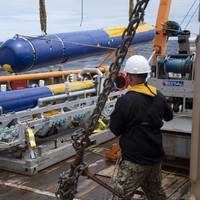
The U.S. Navy uses unmanned and robotic underwater vehicles for a multitude of functions, including environmental sensing, mine hunting, and salvage. The Navy plans to evolve an unmanned systems operating concept that is platform agnostic and capable of operating in highly complex contested environments with minimal operator interaction.The most recent edition of the Navy’s Unmanned Systems (UxS) Roadmap was issued in 2018, and a new version is expected in the near future. The 2018 document states that UxS will operate in every domain…
Greensea Expands, Again
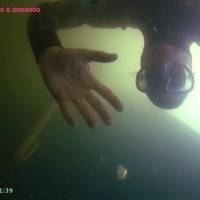
Greensea recently added key personnel to its engineering team in its Plymouth, Mass., office to support their hull robotics program. James Truman, Senior Robotics Engineer, is leading the development of Greensea’s latest technology, a hull crawling robot with precise hull-relative navigation and autonomy capabilities. Assisting James on the hull robotics program is Sam Fladung, Robotics Engineer.“James is one of the best engineers I know. I first met him at graduate school and then worked with him at Phoenix International,” said Greensea CEO, Ben Kinnaman.
Measuring the Hostile Ocean Beneath Hurricanes
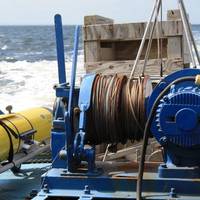
Unmanned Vehicles Collect Data for Improving Storm ForecastsThe influences of ocean conditions and currents on living environments are now more widely appreciated—from the Earth’s climate and severe weather conditions to fisheries and biodiversity. Sustained and widespread measurements are needed to provide essential clues for understanding the oceans, for effective monitoring of environmental changes, and for helping to clarify the long-term effects of global warming.To meet this challenge, ocean researchers have invented various types of unmanned observing platforms.
Teledyne Webb's APEX® Deep MakesRecord Dive

Teledyne Webb Research's Autonomous Profiling Explorer (APEX®) Deep, dives to a record 6,000 meters. The record drive, in the Puerto Rico trench was launched from the R/V Kruger B out of San Juan, starting its dive the afternoon on February 25, 2013. Approximately twenty two hours later the float surfaced and transmitted its data over the Iridium satellite network. APEX floats are based on a buoyancy engine and have been commercially available since founder Douglas Webb opened Webb Research in 1982. APEX floats descend to a programmed depth where they become neutrally buoyant and drift.
Deep Profiling Float Descends to 4000-meters
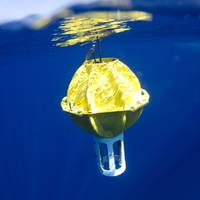
Teledyne Webb Research's new version of its Autonomous Profiling Explorer (APEX®) makes a record 13,123 ft dive off Hawaii. APEX floats are based on a buoyancy engine and have been commercially available since founder Doug Webb started Webb Research in 1982. APEX floats descend to a programmed depth where they become neutrally buoyant and drift. After some interval, usually five to ten days, the buoyancy engine makes the float positively buoyant and it rises to the surface, where it transmits collected data such as temperature and salinity back to researchers via satellite communications.





